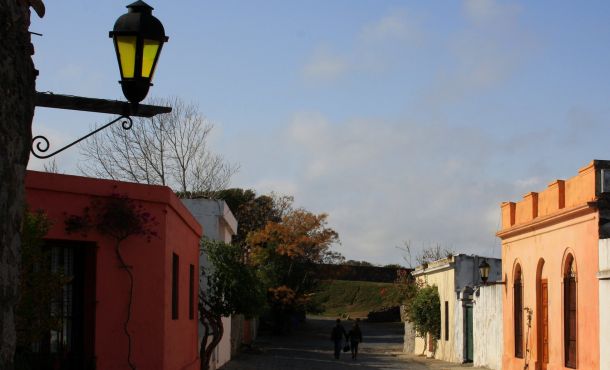History of Uruguay

The inhabitants of the present territory of Uruguay before the arrival of the Spanish were mostly indigenous ethnic groups of nomads and amazónido pámpido sets: charrúas, chanaes, Guarani, yaros, bohanes, tapes, or guenoas and arachanes güencas being charrúas ( pámpido set) the most important and the most resistance offered to the Europeans. The Spanish arrived in the current Uruguayan territory in 1516. Sebastian Cabot in 1527, under the command of the Spanish monarchy, first built a fortified camp on the eastern shore of the Río de la Plata opposite the confluence with the Paraná River, this city was called San Lazaro and was a few kilometers northeast of the present city of Carmel, days after the same Spanish expedition led by Sebastian Cabot built a fort at the mouth of the river called San Salvador in the same way to the fort. The first part of the nineteenth century was marked by a struggle between Spain and Portugal in order to obtain control over the area. In addition, between 1806 and 1807 the UK invaded Buenos Aires and Montevideo, but was defeated and withdrew. Originally the revolutionary process in Buenos Aires, in the so-called Revolution of May 1810, the Eastern Band join soon. The Cry of Asencio called starring Peter Venancio Jose Viera and Benavides on February 27, 1811, is traditionally considered the starting point of the revolution in the country. Quickly following day occupied the towns of Mercedes and Santo Domingo de Soriano, requesting aid to the Board of Buenos Aires. José Gervasio Artigas, now considered a national hero up, joined the revolution and launched a successful revolt against Spain. After holding Soriano, Benavides took The Colla (Rosario) on April 20. Manuel Francisco Artigas stocks advanced on the east, the April 24, 1811 took the town of Minas, the 28th entered San Carlos and Maldonado surrendered on the 29th, then a detachment advanced toward the fort of Santa Teresa. United forces of Manuel Benavides Francisco Artigas and occupied San Jose on April 25 after taking Porongos. The first national constitution was adopted on July 18, 1830 and given the name of the State of Uruguay country novel. The first president elected under the 1830 Constitution, was Fructuoso Rivera. |
